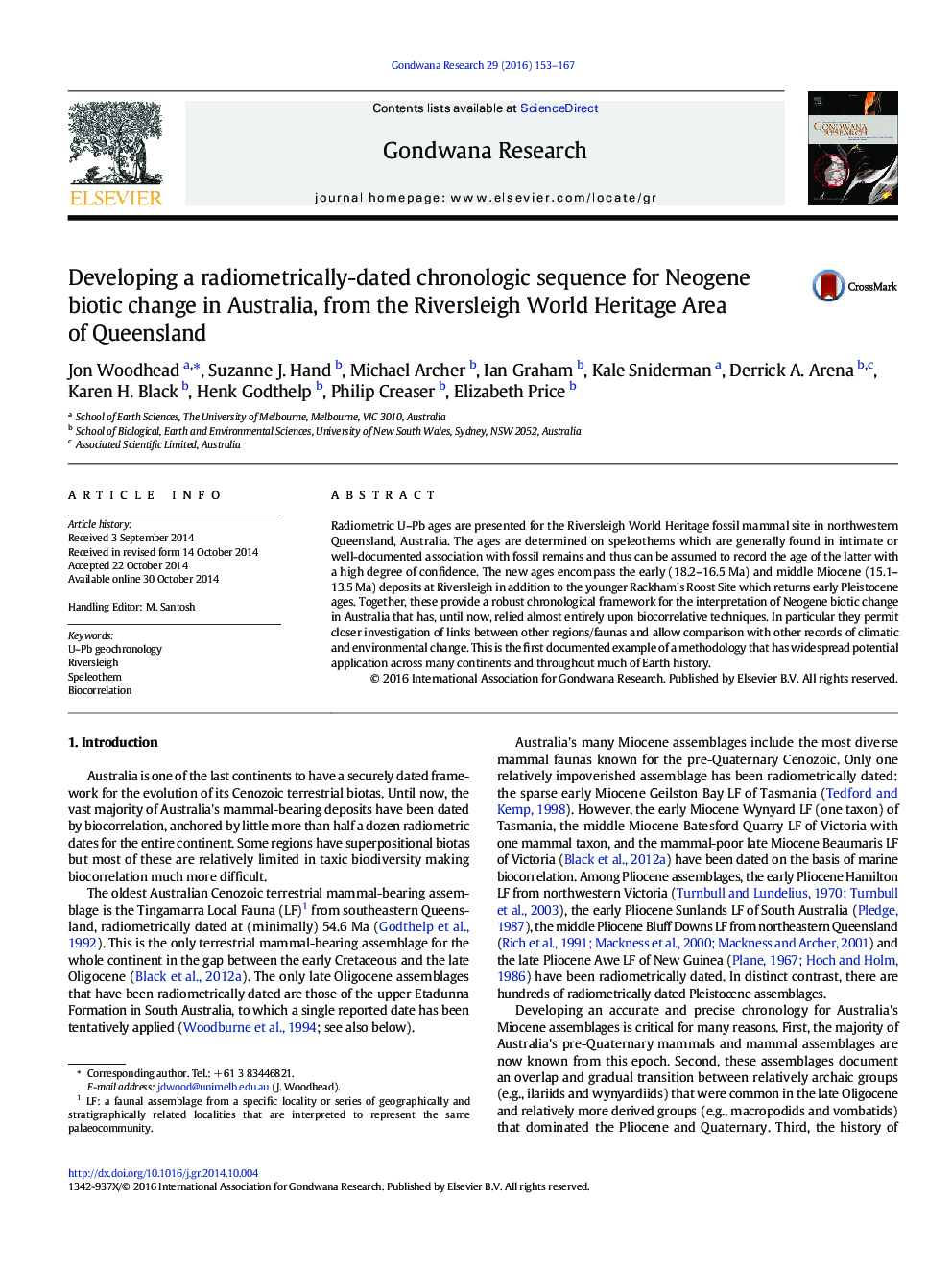| کد مقاله | کد نشریه | سال انتشار | مقاله انگلیسی | نسخه تمام متن |
|---|---|---|---|---|
| 4726776 | 1356346 | 2016 | 15 صفحه PDF | دانلود رایگان |
• First application of the U/Pb speleothem chronometer to studies of biotic change
• First radiometric framework for correlating Australasian Miocene vertebrates
• Allows reliable correlation of changes in Miocene vertebrates with global climates
Radiometric U–Pb ages are presented for the Riversleigh World Heritage fossil mammal site in northwestern Queensland, Australia. The ages are determined on speleothems which are generally found in intimate or well-documented association with fossil remains and thus can be assumed to record the age of the latter with a high degree of confidence. The new ages encompass the early (18.2–16.5 Ma) and middle Miocene (15.1–13.5 Ma) deposits at Riversleigh in addition to the younger Rackham's Roost Site which returns early Pleistocene ages. Together, these provide a robust chronological framework for the interpretation of Neogene biotic change in Australia that has, until now, relied almost entirely upon biocorrelative techniques. In particular they permit closer investigation of links between other regions/faunas and allow comparison with other records of climatic and environmental change. This is the first documented example of a methodology that has widespread potential application across many continents and throughout much of Earth history.
Figure optionsDownload as PowerPoint slide
Journal: Gondwana Research - Volume 29, Issue 1, January 2016, Pages 153–167
